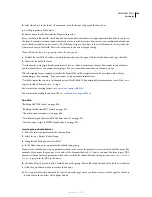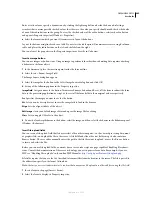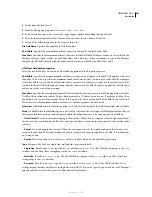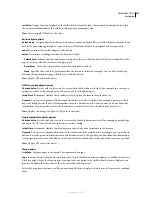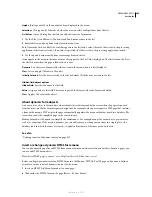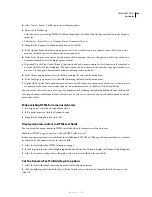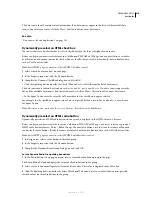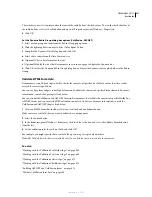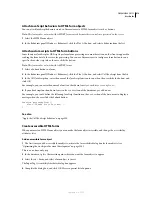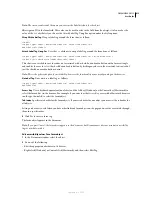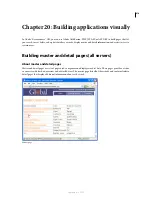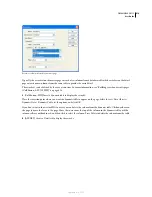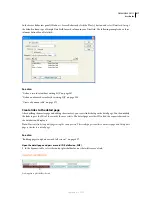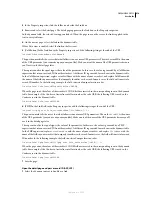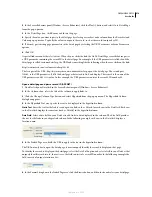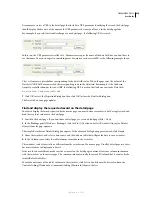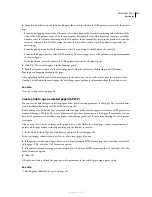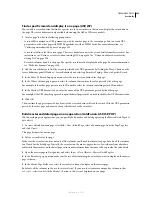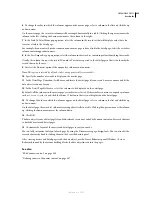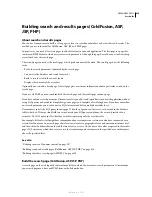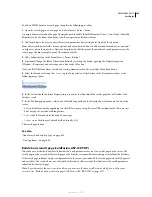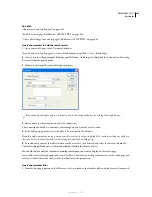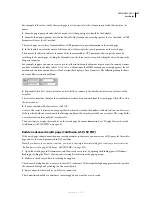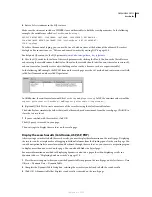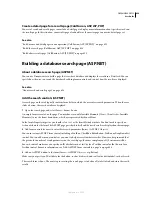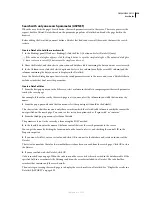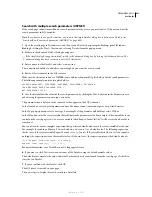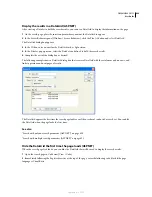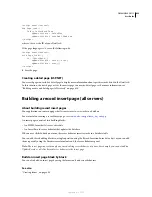
DREAMWEAVER CS3
User Guide
618
2
In the Property inspector, click the folder icon beside the Link box.
3
Browse and select the detail page. The detail page appears in the Link box in the Property inspector.
In the dynamic table, the selected text appears linked. When the page runs on the server, the link is applied to the
text in every table row.
4
On the master page, select the link in the dynamic table.
If Live Data view is enabled, select the link in the first row.
5
(ColdFusion) In the Link box in the Property inspector, add the following string at the end of the URL:
?recordID=#recordsetName.fieldName#
The question mark tells the server that what follows is one or more URL parameters. The word recordID is the name
of the URL parameter (you can make up any name you like). Make a note of the name of the URL parameter because
you'll use it in the detail page later.
The expression after the equal sign is the value of the parameter. In this case, the value is generated by a ColdFusion
expression that returns a record ID from the recordset. A different ID is generated for each row in the dynamic table.
In the ColdFusion expression, replace recordsetName with the name of your recordset, and replace fieldName with
the name of the field in your recordset that uniquely identifies each record. In most cases, the field will consist of a
record ID number. In the following example, the field consists of unique location codes.
locationDetail.cfm?recordID=#rsLocations.CODE#
When the page runs, the values of the recordset's CODE field are inserted in the corresponding rows in the dynamic
table. For example, if the Canberra, Australia, rental location has the code CBR, the following URL is used in the
Canberra row in the dynamic table:
locationDetail.cfm?recordID=CBR
6
(PHP) In the Link field in the Property inspector, add the following string at the end of the URL:
?recordID=<?php echo $row_
recordsetName
['
fieldName
']; ?>
The question mark tells the server that what follows is one or more URL parameters. The word
recordID
is the name
of the URL parameter (you can use any name you like). Make a note of the name of the URL parameter because you’ll
use it in the detail page later.
The expression after the equal sign is the value of the parameter. In this case, the value is generated by a PHP
expression that returns a record ID from the recordset. A different ID is generated for each row in the dynamic table.
In the PHP expression, replace
recordsetName
with the name of your recordset, and replace
fieldName
with the
name of the field in your recordset that uniquely identifies each record. In most cases, the field will consist of a record
ID number. In the following example, the field consists of unique location codes.
locationDetail.php?recordID=<?php echo $row_rsLocations['CODE']; ?>
When the page runs, the values of the recordset’s CODE field are inserted in the corresponding rows in the dynamic
table. For example, if the Canberra, Australia, rental location has the code CBR, the following URL is used in the
Canberra row in the dynamic table:
locationDetail.php?recordID=CBR
7
Save the page.
O
pen the detail page and pass a record ID (ASP, JSP)
1
Select the dynamic content to double as a link.
September 4, 2007

